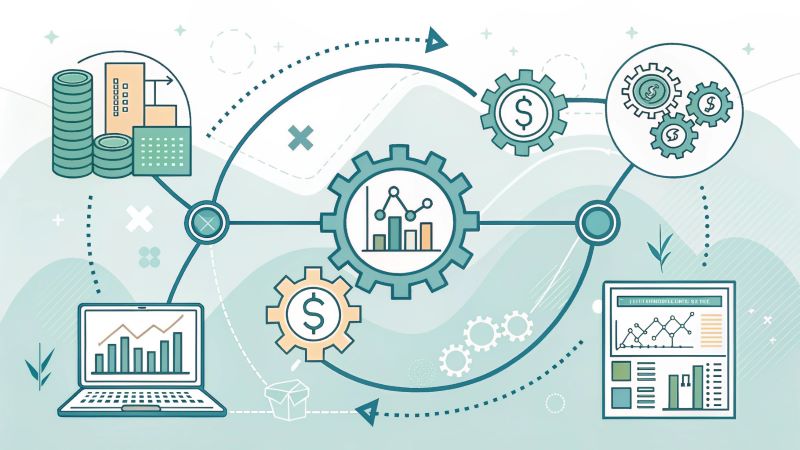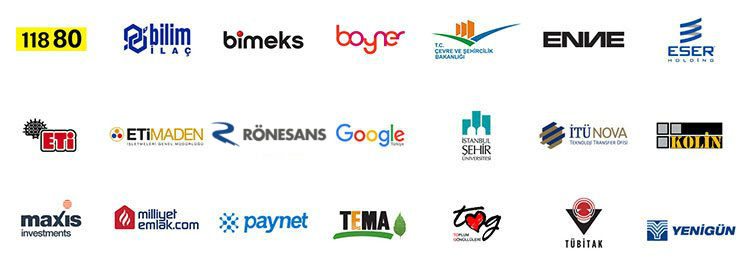
A company's success depends on how smoothly and efficiently its processes run.
In the world of procurement, this means how optimized the Procure-to-Pay (P2P) cycle is.
This cycle covers the entire journey from identifying a need to making a payment to the supplier.
But this journey is often bumpy and winding.
Broken Links: The Friction Created by an Inefficient P2P Cycle
The core problem in many organizations is that the P2P cycle is like a chain made of broken links.
Procurement, finance, receiving, and the requesting departments each manage a link in this chain, often using different systems or manual processes.
Information gets lost between emails and spreadsheets.
Manual data entry inevitably leads to errors.
Approvals can wait for weeks because it's unclear who is responsible.
This fragmented structure adds constant friction to the entire process, making it slow, cumbersome, and far from transparent.
Not Just Slow, Expensive: The Real Cost of a Weak P2P
The cost of this friction is more than just frustration and lost time.
According to leading analyst firms, the cost to process a single invoice without automation can exceed $15, whereas companies with high levels of automation can lower that cost to under $3.
For a company that processes thousands of invoices, this translates to a difference of hundreds of thousands of dollars.
Beyond this cost:
-
Cash Flow Suffers: Delayed invoice approvals lead to missed early payment discounts and incurred late payment penalties.
-
Supplier Relationships Are Damaged: Late and problematic payments strain your relationships with your best suppliers and weaken your future negotiating power.
-
Operational Efficiency Declines: Employees spend valuable hours chasing down lost documents, following up on approvals, and correcting data errors instead of doing value-added work.
-
Visibility Is Lost: No one has a clear picture of the company's immediate liabilities or spending commitments, turning financial planning into a nightmare.
End-to-End Efficiency: 5 Strategic Steps to Optimize the P2P Cycle
You can transform your P2P cycle from a source of waste into an engine of efficiency by connecting these broken links and eliminating friction.
This requires carefully analyzing each step and leveraging technology to ensure end-to-end optimization.
Here are 5 strategic steps to streamline your cycle and guarantee your success.
What is the Procure-to-Pay (P2P) cycle?
The Procure-to-Pay (P2P) cycle is an integrated process that begins with identifying a need for a good or service and ends with making the payment to the supplier for that good or service.
This cycle includes all steps such as requisition, approval, purchase order (PO) creation, goods receipt, invoice processing, and payment.
An effective P2P cycle provides full control and visibility over spending.
Step 1: Simplify the Requisition and Approval Processes
The beginning of the cycle, the requisition process, is often the most chaotic.
Ensure employees can state their needs accurately and completely by creating user-friendly and standardized requisition forms.
Automate the approval workflows.
Set value-based rules so that low-cost requests are approved quickly and large purchases are routed to the correct managers.
Mobile-friendly approvals allow managers to speed up the process even when they are out of the office.
Step 2: Standardize Purchase Order Management
Ensure that a Purchase Order (PO) is automatically created from an approved requisition.
This eliminates manual data entry errors and guarantees that all purchases are based on an official document.
Managing all orders through a central system offers complete visibility to both the procurement team and suppliers.
Step 3: Simplify Receiving and Goods Acceptance
When a good or service is received, it is critical that this information is entered into the system quickly and easily.
Simplify the process by enabling goods acceptance via mobile devices or a simple portal.
This step is a fundamental prerequisite for verifying the invoice and making a timely payment.
Step 4: Automate Invoice Management
Invoice processing is one of the most costly and time-consuming steps in the P2P cycle.
Automatically convert paper or PDF invoices into digital data with OCR (Optical Character Recognition) technology.
Have the system automatically compare the invoice with the corresponding purchase order and goods receipt document.
What is 3-way matching and why is it important?
3-way matching is the process of matching three documents to each other: the invoice, the purchase order, and the goods receipt note.
This is a control mechanism to ensure that what was ordered is the same as what was delivered and what was invoiced.
This process is vital because it prevents incorrect or duplicate payments, fraud, and invoice disputes.
Automation makes this matching incredibly efficient, reducing it to a matter of seconds.
Step 5: Integrate Payment Processes
Once an invoice is approved, the payment process must also run smoothly.
Integrate your P2P system with your finance or accounting (ERP) system.
This integration ensures that approved invoices are sent directly to the payment queue.
This not only guarantees that payments are made on time but also creates the opportunity to take advantage of early payment discounts.
What are the benefits of P2P automation?
P2P automation provides many benefits beyond reducing costs and increasing efficiency.
It offers full visibility and control over spending.
It increases data accuracy by eliminating manual errors.
It reduces cycle times from days to hours.
It allows employees to focus on strategic tasks and improves supplier relationships.
In short, automation moves the entire procurement function to a more strategic position.
Conclusion: Frictionless Procurement, Transformation into a Strategic Asset
Optimizing the Procure-to-Pay cycle is more than just improving a process.
It is a strategic move that directly impacts the company's cash flow, profitability, and operational agility.
When you connect the broken links and eliminate the friction, you transform the procurement department from a slow and cumbersome cost center into a valuable strategic asset that accelerates the company's success.







